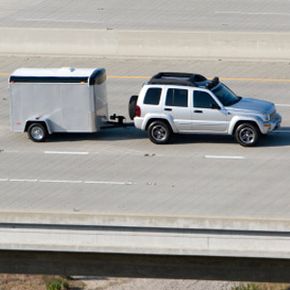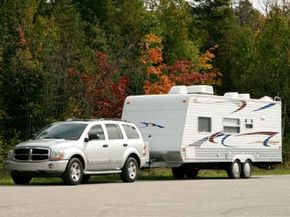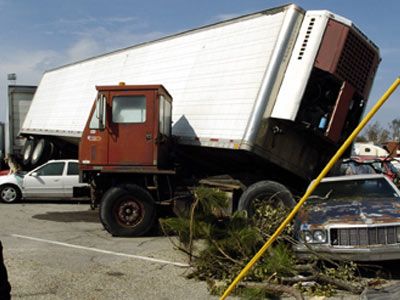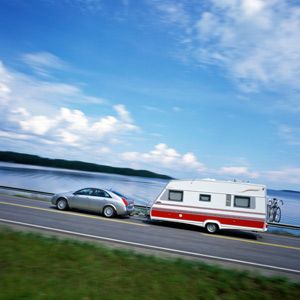Sometimes, towing a trailer is really handy. For example, if you're moving to a new house, you may want to hook up a trailer to your vehicle rather than hire someone else to move your belongings. But even if your vehicle is rated and equipped to tow, you shouldn't just head out on the highway. While trailers are useful, they can also be hazardous. If you don't follow proper safety procedures, you could put yourself and your property at risk.
Before we get too involved, it will help to learn a little about the equipment you'll encounter when towing a trailer. There are three common types of trailer hitching systems:
Advertisement
- Weight-carrying hitches
- Weight-distributing hitches
- Fifth-wheel hitches
We'll concentrate on the first two hitching systems. They use a trailer hitch receiver mounted on the back of the towing vehicle. The fifth-wheel hitch is different -- instead of attaching to the back of a vehicle, it hitches to a special connector in the bed of a pickup truck. The connector is just in front of the rear axle.
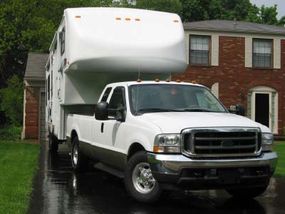
For weight-carrying and weight-distributing hitches, you'll encounter a lot of the same hardware. On the tow vehicle side, you have the trailer hitch receiver, which attaches directly to the tow vehicle. Next, you'll need a draw bar or ball mount. These attach to the trailer hitch receiver -- you use a locking pin to secure the mount to the hitch. On top of the ball mount is, naturally enough, a ball. The size of the ball will determine the type of trailer you'll be able to hitch to your vehicle.
On the trailer side, you have the trailer itself. The section of the trailer that extends out to connect to the tow vehicle is the tongue. On the end of the tongue is a coupler. The ball from the tow vehicle fits into the coupler. A weight-distributing hitch has special equipment designed to spread the weight pressing down on the tongue to the axles of both the tow vehicle and the trailer. Weight-carrying hitches put the full tongue weight on the tow vehicle. We'll look into that further in the next section.
Most trailers have their own light and brake systems. In all cases, you'll have to connect these systems to your own vehicle before they'll work. To power the light system, newer tow vehicles usually have a connector stowed in a convenient location. With an older vehicle, you may have to connect the trailer's electrical system through your taillights.
Let's take a closer look at the steps you should follow when you connect your trailer to your tow vehicle.
Advertisement

